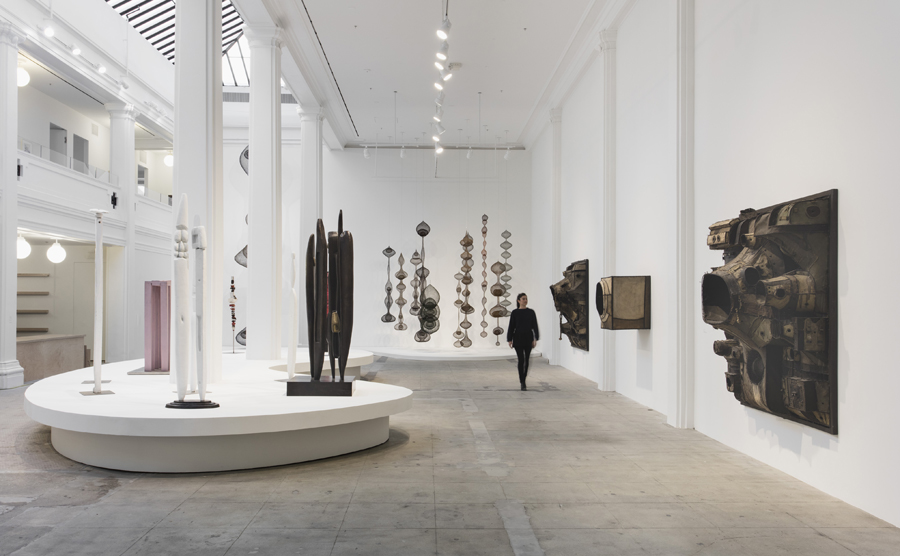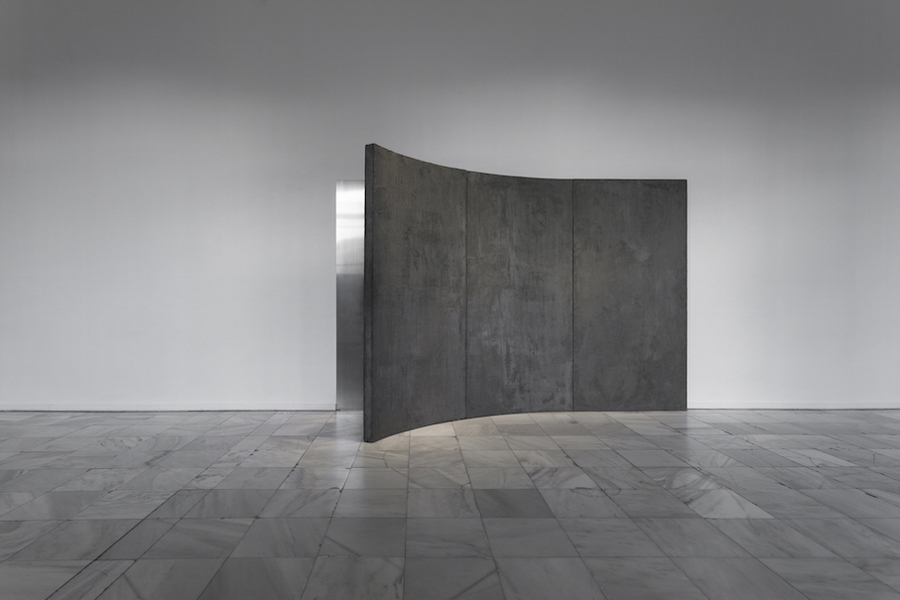2016 Highlights: Jonathan Griffin
The best of this year's LA shows, featuring Nathaniel Mellors and a survey at the newly opened Hauser Wirth & Schimmel
The best of this year's LA shows, featuring Nathaniel Mellors and a survey at the newly opened Hauser Wirth & Schimmel

The word impossible is overused, so I’ll just say that it is a very difficult task indeed to pick only two exhibitions from a 12-month period that were definitively better than all the rest. There were many great shows in Los Angeles in 2016, but none that obviously towered over the increasingly rich forest canopy of the city’s artistic ecosystem. Some shows I loved for a single work, such as the subtly replaced gallery window in K.r.m. Mooney’s exhibition at Reserve Ames gallery; others for a particular conjunction of works; and some – like ‘The Ocular Bowl’ at Kayne Griffin Corcoran – for their overall sense of rightness. Some shows stuck with me after a flying visit, while others, such as curator Michael Ned Holte’s group show ‘Routine Pleasures’ at the MAK Center, impacted me in significant ways, largely because of the work I was obliged to put in while writing about them.

How can one compare a posthumous museum survey of a canonical but well-known figure such as Agnes Martin at LACMA, for example, with a scrappy group show by a bunch of recent graduates, half of which featured works instantly forgettable and half which left you thrilled and perplexed, eager to see more? If I had to do without one of them, it would probably be the former (despite the wonders in Martin’s show), even if I’d be hard pressed to say that the latter was in any sense ‘better’.
The exhibitions I’m choosing, therefore, are two that included as many artistic food-groups as possible, so if I had to eat nothing else for a while, I’d probably survive. They each comprised parts old and new, familiar and surprising, entertaining and difficult, grandiose and intimate, successful and problematic, serious and funny. (That last underestimated ingredient, for me, is essential.)

I’ve seen a lot of exhibitions by and including Nathaniel Mellors over the years, dating back to his undergraduate degree show in the late 1990s. But his show ‘Prequel Dump’, his first at The Box, was one of his best. Bringing together the five episodes (so far) of Ourhouse (2010–16), his ongoing absurdist soap-opera about a dysfunctional aristocratic family, along with works stretching back to 2008, the show contrived a kind of ur-Mellors environment, a darkened haunted house of prostheses, poo-jokes and British eccentricity.
In the (challengingly large) main gallery, a slanted wall formed a projection screen for Ourhouse Ep. -1: ‘Time’ (2015), while four big ugly ’90s television sets simultaneously played the other episodes behind it. The scale of ‘Prequel Dump’ demonstrated that through his infatuation with the minutiae of his obscure (for LA) references and in-jokes (which sometimes suggest that his art is made primarily to amuse himself and his crew of collaborators) Mellors’ project is really concerned with the most expansive and fundamental of ideas: the social function of art, the furthest reaches of human history and mythology, and the enduring problem of what to do with our shit. I didn’t necessarily love all his new paintings, done in collaboration with Chris Bloor, but I loved all their titles. My favourite: WTF Dinosaur in Advance of Religious Confusion (2015–16).

As it happens, the other exhibition that stands out in the past year took place a block away from The Box. The new Hauser Wirth & Schimmel gallery was inaugurated in March by the sprawling ‘Revolution in the Making: Abstract Sculpture by Women, 1947 – 2016,’ which filled all zones of the former flourmill. Naturally, in the face of such a behemoth, some people groused about certain omissions, as if the show was answerable to the same criticisms as a museum survey, which of course it was not, even if it looked like one.
HW&S partner Paul Schimmel and academic Jenni Sorkin’s transcendent installation in the glass-roofed main gallery was a highlight, convening a cluster of vertical totems by Louise Bourgeois on an ovular platform flanked by the puckering orifices of Lee Bontecou’s wall-works and webby, evaporating sculptures in wire by Claire Falkenstein and Ruth Asawa.

Several chapters later, through thoughtful passages that connected historical works by Sheila Hicks and Magdalena Abakanowicz, Eva Hesse and Hannah Wilke, Marisa Merz and Lygia Pape, and perhaps most memorably, Cristina Iglesias and Isa Genzken, we arrived at a gallery of more or less contemporary practitioners. We need more Phyllida Barlow in Los Angeles! Beside her 2014 installation Untitled: Gig were pieces by Kaari Upson, Jessica Stockholder and Lara Schnitger, the latter a particularly special treat.
‘Revolution in the Making: Abstract Sculpture by Women, 1947 – 2016’ was not perfect by any means, but it was ambitious, informative and righteous. It raised the bar not for other commercial spaces in the city, none of whom have the resources to compete with it, but for LA’s museums, one of which Schimmel had recently left behind.

Fortunately, 2017 looks set to be a good year for the local institutional landscape. Following Hamza Walker’s recent appointment as director of LAXART, we look forward to the Hammer Museum’s gallery refurbishment and Jimmie Durham retrospective in January, the Marciano Art Foundation opening in Spring (its first show curated by Philipp Kaiser), the Santa Monica Museum’s reincarnation as ICA Los Angeles, which launches in the Autumn with a Martín Ramírez survey (itself part of the next iteration of the ambitious Pacific Standard Time, opening in September, focusing on Latin American and Latino art) and the Main Museum, which continues its experimental Beta phase before its scheduled completion in 2020. It is hard for me to say that I am looking forward to 2017 in America, exactly, but these are reasons to retain some hope. The sun will rise in the morning.
Lead image: Gego (Gertrude Louise Goldschmidt), Reticulárea, 1975, stainless steel wire, 210 x 260 x 51 cm. Courtesy: The Museum of Fine Arts, Houston © Fundación Gego; photograph: Bridgeman Images. Included in ‘Revolution in the Making: Abstract Sculpture by Women, 1947 – 2016’, 2016, Hauser Wirth & Schimmel, LA.
























